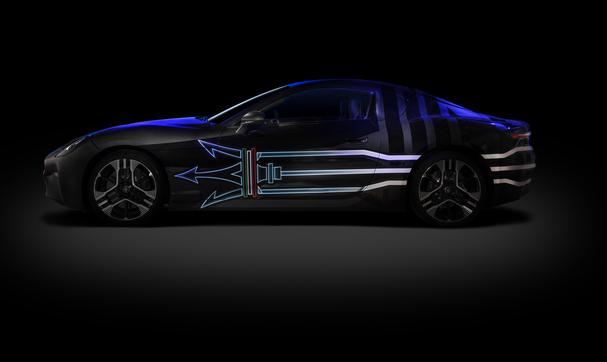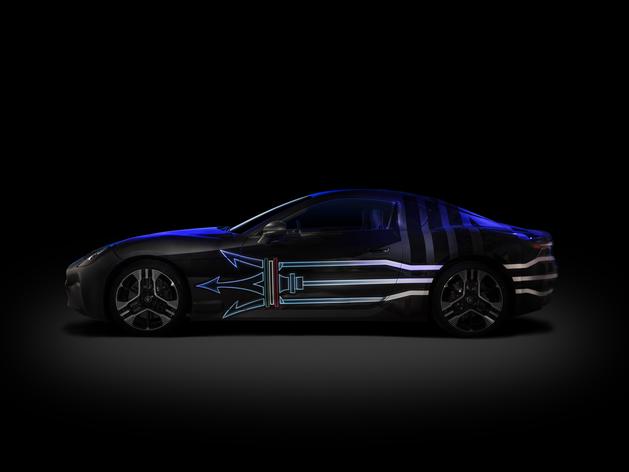
Whereas other luxury sports car makers, including Porsche, Lamborghini and Ferrari, have already released their electrification plans, Maserati was slow to renounce its famous V8 and V12 engine roar. But this week, the Italian car manufacturer presented an ambitious plan to offer electric versions of all of its models by 2025 and shift to EV-only sales by 2030. With such a timeline, Maserati is looking to become “the first luxury brand to complete its electric lineup by 2025”, all part of its parent Stellantis' 2030 strategic plan announced earlier this month. On top of that, the automaker announced its plans for the market launch of its electric range Maserati Folgore, with the next-generation GranTurismo sports coupe as the first EV to come out of that product lineup.
After creating a separate EV business, US-based Ford has announced plans for seven new electric models in Europe, a battery assembly site in Germany and a nickel cell manufacturing joint venture in Turkey. “Ford is all-in and moving fast to meet the demand in Europe and around the globe,” said Jim Farley, Ford's president and CEO. Following the introduction of the all-electric Mach-E in 2021 and Mach-E GT this year, plus the launch of the E-Transit in the next quarter, Ford unveiled plans for three new passenger vehicles and four new commercial vehicles to join the Ford family in Europe. Starting in 2023, Ford will begin production of an all-new electric passenger vehicle, a medium-sized crossover, built in Cologne with a second electric vehicle added to the Cologne production line-up in 2024. In addition, its top-selling passenger vehicle in Europe, the Ford Puma, will be available as an electric version made in Craiova, Romania, starting in 2024. As part of the major EV push on the European continent, the automaker will invest $2 billion into building new passenger car at its Cologne Electrification Centre in Germany, where it expects production to increase to 1.2 million vehicles over the next six years. The investment includes a new battery assembly facility scheduled to start operations in 2024. Finally, it also announced it is pushing forward with the production of its own EV batteries, through a joint venture business with SK On and Koç Holding to build one of the largest manufacturing plants for commercial vehicles in Europe. Located near Ankara, the plant would manufacture high nickel NMC cells for assembly into battery array modules. Production is intended to start as early as mid-decade with an annual capacity likely to be in the range of 30 to 45GWh.
Plans for another European gigafactory were floated earlier this week by Northvolt. This time around, the Swedish battery developer said it intends to establish a battery gigafactory in Heide, Schleswig-Holstein, northern Germany, increasing its pipeline of battery manufacturing capacity under development to more than 170 GWh. With an annual potential production capacity of 60 GWh, Northvolt Drei will deliver a supply of sustainably produced lithium-ion batteries to the European market, sufficient for one million electric vehicles. The factory will source significant volumes of its raw material requirements from recycled battery metals, as part of Northvolt’s commitment to source 50% of its raw material needs from recycling by 2030. Alongside battery production, Northvolt Drei will target an on-site battery recycling plant which will ensure efficient reuse of byproducts from the production process and provide a sustainable solution for end-of-life EV batteries recovered from European markets. The German gigafab announcement comes only months after the first lithium-ion battery cell has rolled off Northvolt's production lines in Sweden.

Meanwhile, South Korea-based battery cell manufacturer Samsung SDI has started building a pilot line for solid-state batteries. Samsung SDI is planning facilities and systems for the production of cathodes and solid electrolytes as well as the introduction of new production processes there. The so-called ‘S-Line’ at Samsung SDI’s R&D center in the city of Suwon will be about 6,500 square meters in size. With the pilot production, Samsung SDI says it wants to achieve “market-leading research results and production technologies for solid-state batteries”. The company provides very little information with regard to the production capacity and the technology's development status in a short announcement issued earlier this week. Two years ago, Samsung SDI presented a solid-state pouch cell in a prototype stage said to be capable of 800km of range and cycle life of over 1,000 charges. Thanks to a new, ultrathin silver-carbon (Ag-C) coating on the anode, the Samsung team reported it had managed to increase energy density up to 900Wh/L and mitigate dendrite growth by reducing the anode thickness.
Indeed, solid-state batteries continue to garner interest in the automotive space with some legacy manufacturers describing them as one of the key levers for determining the cost, scalability, and energy density of EV batteries, and newcomers to the market looking to prove the technology's potential. This week, California-based Sakuu, developer of the 3D printed solid-state battery, announced the benchmark energy-density achievement of 800 Wh/L in its first-generation non-printed lithium metal battery. This marks a significant milestone on Sakuu’s roadmap to fully 3D printable solid-state batteries capable of greater than 1200 Wh/L by 2023, substantially surpassing lithium-ion batteries found in today’s top-selling EVs that function in a range of 500–700 Wh/L. “The arrival of a safe, sustainable, and high-performance SSB, manufactured with a totally novel 3D printing method can solve critical supply chain and safety issues while moving beyond limitations of today’s lithium-ion batteries,” states Robert Bagheri, Sakuu's founder and CEO. In addition to the 800 Wh/L mark, the first-generation lithium-metal battery is demonstrating high energy retention at 97% after 200 cycles. The battery, while remaining dendrite-free, is expected to record 80% retention at 800 cycles once cycling has been completed.
This week, Volkswagen AG‘s Chief Financial Officer Arno Antlitz revealed that some of the group's battery electric vehicles are sold out until 2023, whereas many other models require long wait times. “We see better scale, we see better margins, we see high customer demand. Originally we thought it takes two to three years until we see the parity of ICE and battery-electric vehicles,” he told Bloomberg. Last year, the group sold about 762,400 plug-in EVs, including 452,900 all-electric – up 95.5% year-over-year. However, due to supply chain crunches, Volkswagen Group might be forced to increase EV prices, just like many other of its competitors. “Raw materials are clearly a headwind for us. There might be also the time when we need to pass on some of the increases to the market,” Antlitz said.
A member of the VW Group, Porsche, updated on Friday its electrification plan with the release of its financial results. The German luxury sports car maker has now set a new goal for more than 80% of sales to be all-electric by 2030. After launching its first and currently only fully electric vehicle Taycan in 2019, Porsche is now looking to offer its 718 mid-engine sports car only as a fully electric version by 2025. Last year, the automaker delivered 301,915 vehicles globally and 41,296 of them were Taycan sedans, which sold even more than Porsche's 911 iconic sports car. Towards its electrification goals, Porsche noted that it is heavily investing with its partners in high-end charging stations as well as in the establishment of its own infrastructure. It also continues to make other significant investments in battery technology with its new Cellforce group focused on developing high-performance battery cells that should be ready for mass production by 2024.
This content is protected by copyright and may not be reused. If you want to cooperate with us and would like to reuse some of our content, please contact: editors@pv-magazine.com.